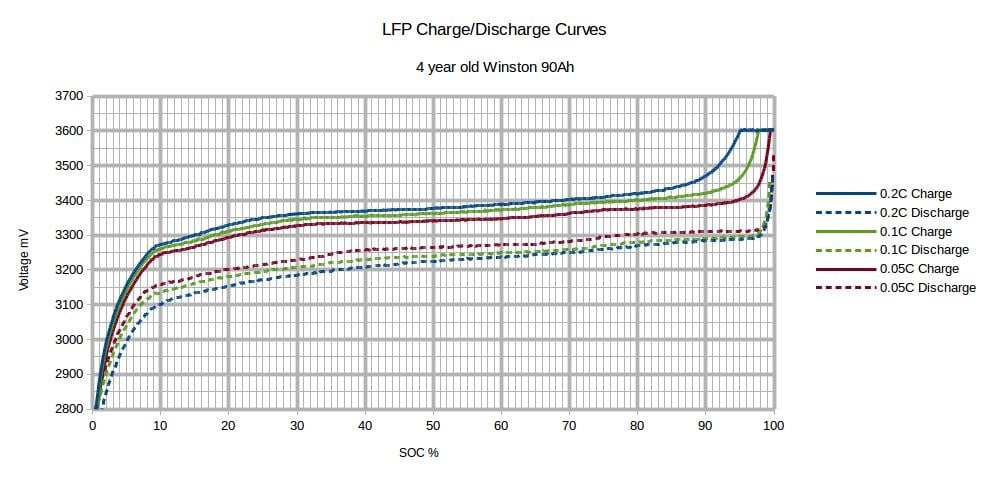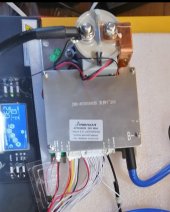meetyg
Solar Enthusiast
- Joined
- Jun 4, 2021
- Messages
- 1,093
Hi.
I'm building a 24v 40Ah 8S Lifepo4 pack, with an 80A JBD BMS.
This will be charged with a CC/CV AC-DC Lifepo4 charger (voltage is adjustable).
I have done all the top-balancing procedures, at 3.65v, and did a capacity test on each cell separately. Each one gave slightly above 40Ah.
Anyways, now I have connected them in series, and hooked up the BMS. Cells were only at 4mv deviation from one another.
My question is: How do you keep the cells in balance after a discharge-charge cycle, if you only want to charge up to say 3.4v ?
I know some say that the cells should keep balance if they were properly top balanced, but in reality they will drift.
What parameters should I use in the JBD to allow effective balance?
Having that the charge curve is mostly flat, will it be possible to (true SOC) balance at 3.4v at all?
I have seen many of Andy's (Off grid garage) videos about balancing and active balancers etc... but I'm confused and not sure what the bottom line is? Do I have to go higher (say 3.5v) in order to balance ?
Should I keep my SOC in between the high/low "knees" of the charge curve (say 3.0v to 3.4v) ? Will that minimize the chances of getting the cell imbalanced?
Thanks.
I'm building a 24v 40Ah 8S Lifepo4 pack, with an 80A JBD BMS.
This will be charged with a CC/CV AC-DC Lifepo4 charger (voltage is adjustable).
I have done all the top-balancing procedures, at 3.65v, and did a capacity test on each cell separately. Each one gave slightly above 40Ah.
Anyways, now I have connected them in series, and hooked up the BMS. Cells were only at 4mv deviation from one another.
My question is: How do you keep the cells in balance after a discharge-charge cycle, if you only want to charge up to say 3.4v ?
I know some say that the cells should keep balance if they were properly top balanced, but in reality they will drift.
What parameters should I use in the JBD to allow effective balance?
Having that the charge curve is mostly flat, will it be possible to (true SOC) balance at 3.4v at all?
I have seen many of Andy's (Off grid garage) videos about balancing and active balancers etc... but I'm confused and not sure what the bottom line is? Do I have to go higher (say 3.5v) in order to balance ?
Should I keep my SOC in between the high/low "knees" of the charge curve (say 3.0v to 3.4v) ? Will that minimize the chances of getting the cell imbalanced?
Thanks.
Last edited:





